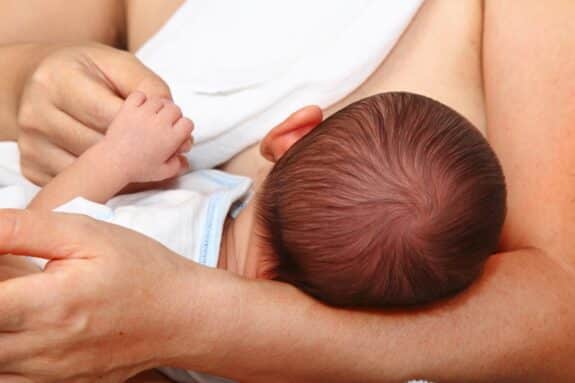Now that marijuana is legal in many states and all of Canada, whether or not it has an affect on nursing babies is a contentious point. It is estimated that it takes about two to three hours to get one alcoholic drink out of your system. Does the THC from marijuana stay for the same time frame?
To better understand how much marijuana or constituent compounds actually get into breast milk and how long it remains, researchers at University of California San Diego School of Medicine conducted a study, publishing online in Pediatrics.
For their study the team looked at 54 samples, provided between 2014 and 2017, from 50 women who used marijuana either daily, weekly or sporadically were examined. The women also reported in questionnaires whether they were exposed to marijuana, medications and other substances in the 14 days before their milk samples were collected.
Researchers detected THC, the primary psychoactive component of marijuana, in 63 percent of the breast milk samples for up to six days after the mother’s last reported use.
Currently the American Academy of Pediatrics discourages moms against marijuana use during pregnancy and while breastfeeding. Because of the lack of definitive research on this topic, they error on the side of caution regarding the potential adverse effects of THC on pregnancy and child development.
“Pediatricians are often put into a challenging situation when a breastfeeding mother asks about the safety of marijuana use. We don’t have strong, published data to support advising against use of marijuana while breastfeeding, and if women feel they have to choose, we run the risk of them deciding to stop breastfeeding — something we know is hugely beneficial for both mom and baby,” said Christina Chambers, PhD, MPH, principal investigator of the study, professor in the Department of Pediatrics at UC San Diego School of Medicine and director of clinical research at Rady Children’s Hospital-San Diego.
Researchers noted that cannabinoids like to bind to fat molecules, which are abundant in breast milk. This suggests that, in women who use marijuana, these compounds can end up in breast milk, raising concerns about their potential effects on nursing babies.
“We found that the amount of THC that the infant could potentially ingest from breast milk was relatively low, but we still don’t know enough about the drug to say whether or not there is a concern for the infant at any dose, or if there is a safe dosing level,” said Chambers, co-director of the Center for Better Beginnings at UC San Diego. “The ingredients in marijuana products that are available today are thought to be much more potent than products available 20 or 30 years ago.”
The samples of breast milk used for the study were obtained from mothers who joined the Mommy’s Milk Human Milk Research Biorepository at UC San Diego, a program that focuses on looking at the numerous benefits of breast milk at the molecular level. The research team collaborated with Skaggs School of Pharmacy and Pharmaceutical Sciences at UC San Diego to measure the levels of marijuana in the samples.
The average concentration of THC found in those samples was 9.47 nanograms per milliliter. When calculated, the researchers estimated that a hypothetical 3-month-old, weighing 6.1 kilograms or 13 pounds, would ingest about 0.040 nanograms of THC per milliliter of milk.
The results, they said, are a stepping stone for future research. More studies need to be done, not only to determine the long-term impact of marijuana in breast milk for children, but more specifically: “Are there any differences in effects of marijuana in breast milk for a two-month-old versus a 12-month-old, and is it different if the mother smokes versus eats the cannabis? These are critical areas where we need answers as we continue to promote breast milk as the premium in nutrition for infants.”
“Whether this means that some level — or any level — of these metabolites can negatively influence child development is unknown at this point,” Christina added.







